Become A Sponsor
|
Why Ads
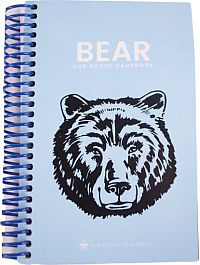 |
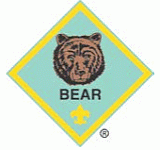
Bear Elective Adventure Requirements
|
Requirements
were REVISED
effective
June 1, 2022.
To see the changes which were made,
Click here.
For the previous requirements,
Click here.
There are 9 Elective Adventures, plus 3 Preview Adventures, which can
be earned as electives in the Bear program. The Protect Yourself Rules preview
adventure can also be earned for requirement 4.
Preview Adventures:
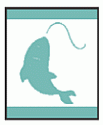 |
Complete at least three of the following.
- Discover and learn about three types of fish in your area.
Draw a color picture of each fish, record what each one likes
to eat, and describe what sort of habitat each one likes.
- Learn about your local fishing regulations with your den
leader or a parent or guardian. List three of the regulations
you learn about and one reason each regulation exists.
- Learn about fishing equipment, and make a simple fishing
pole. Practice casting at a target.
- Go on a fishing adventure, and spend a minimum of one hour
trying to catch a fish. Put into practice the things you have
learned about fish and fishing equipment.
|
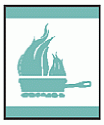 |
Complete at least three of the following.
- Create your own Bear cookbook using at least five recipes
you might cook or prepare either on your own or with some adult
help. Include at least one recipe each for breakfast, lunch,
dinner, and a nutritious snack.
- With a family member or den leader, prepare for cooking
by explaining the importance of planning, tool selection, sanitation,
and cooking safety.
- Select and prepare two nutritious snacks for yourself, your
family, or your den.
- With the help of an adult, select a recipe to prepare in
a kitchen for your den or your family. Help to select the needed
ingredients, perhaps from a garden, grocery store, or farmers’
market. Cook and serve your planned meal. Clean up after the
preparation and cooking.
- With the help of an adult, select a recipe to prepare in
the outdoors for your family or den. Help to select the needed
ingredients, perhaps from a garden, grocery store, or farmers’
market. Cook and serve your planned meal. Clean up after the
preparation and cooking.
|
 |
Complete all of the following.
- Do one of the following:
- If you have a pet, make a list of tasks that you did
to take care of the pet for two weeks.
- If you do not have a pet, research one that you would
like to have and prepare a report about the care it needs.
- Complete one of the following:
- Make a poster or a PowerPoint presentation about your
pet or a pet you would like to have. Share the poster or
presentation with your den, pack, or family.
- Make a poster or PowerPoint presentation explaining
three ways that animals can help people. Share the poster
or presentation with your den, pack, or family.
- Complete at least one of the following and share with your
den, pack, or family:
- Visit with a local veterinarian or an animal shelter
caretaker. Find out what types of animals he or she might
see on a regular basis and the types of care he or she gives
to them.
- Learn about careers that involve the care of animals.
What education, training, and experience are required?
|
 |
Complete all of the following.
- Talk with your family or den about forensics and how it
is used to help solve crimes.
- Take your fingerprints and learn how to analyze them.
- Complete one of the following:
- Learn about chromatography and how it is used in solving
crimes. Do an investigation using different types of black,
felt-tip markers. Share your results with your den.
- Do an analysis of four different substances: salt, sugar,
baking soda, and cornstarch.
- Complete one of the following:
- Visit the sheriff’s office or police station in your
town. Find out how officers collect evidence.*
- Learn about the different jobs available in forensic
science. Choose two, and find out what is required to work
in those jobs. Share what you learn with your den.
- Learn how animals are used to gather important evidence.
Talk about your findings with your den.
* Note that this may be done during the same visit as "Paws for
Action" requirement 3A.
|
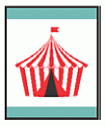 |
Complete at least four of the following.
- Play a challenge game or initiative game with the members
of your den. Take part in a reflection after the game.
- Working with the members of your den, organize a Cub Scout
carnival and lead it at a special event.
- Help younger Cub Scouts take part in one of the events at
the Cub Scout carnival.
- After the Cub Scout carnival, discuss with the members of
your den and your den leader what went well, what could be done
better, and how everyone worked together to make the event a
success.
- With your den, develop a thank-you cheer to recognize those
who helped organize the Cub Scout carnival.
|
 |
Complete requirements 1-4. Requirement 5 is optional.
- Discuss with your family or den the history of marbles,
such as where and when the game began. Talk about the different
sizes of marbles and what they are made of and used for.
- Learn about three different marble games, and learn to play
one of them. Learn how to keep score. Learn and follow the rules
of the game. Play the game with your family, friends, or your
den.
- Learn four or five words that are used when talking about
marbles. Tell what each of the words means and how it relates
to playing marbles. Share this information with your den.
- Complete one of the following:
- With your den or family, make a marble obstacle course
or marble golf course. Share what you create. Invite everyone
to go through your course.
- Create your own game using marbles, and design rules
for playing the game. Share the game you created with your
den, family, or friends. Explain the rules and how to play
the game.
- With your den or family, create a marble race track.
Have at least two lanes so you can race your favorite marbles
against each other.
- Make a marble maze.
- With the help of an adult, make a marble bag to hold marbles.
|
 |
Complete at least four of the following.
- Think about what makes you laugh. Write down three things
that make you laugh.
- Practice reading tongue twisters.
- Create your own short story. Remove some nouns, verbs, adjectives,
and adverbs from the story, leaving blanks. Without telling
the story, have a friend insert his or her own nouns, verbs,
adjectives, and adverbs in the story you created.
- With a partner, play a game that makes you laugh.
- Share at least two jokes with members of your den to make
them laugh.
- Practice at least two run-ons with your den, and perform
them at a pack meeting or campfire program.
|
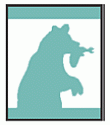 |
Complete requirements 1-4 plus two others.
- Explain the importance of response personnel or lifeguards
in a swimming area. Tell how the buddy system works and why
it is important.
- Visit a local pool or swimming area with your den or family.
Go swimming or take a swimming lesson.
- Explain the safety rules that you need to follow before
participating in boating.
- Identify the safety equipment needed when going boating.
- Demonstrate correct rowing or paddling form. Explain how
rowing and canoeing are good exercise.
- Show how to do both a reach rescue and a throw rescue.
- Demonstrate the front crawl swim stroke to your den or family.
- Name the three swimming ability groups for the Boy Scouts
of America.
- Earn the BSA beginner swim classification.
|
 |
Complete at least four of the following.
- Make static electricity by rubbing a balloon or a plastic
or rubber comb against another material, such as a fleece blanket
or wool sweater. Explain what you learned.
- Conduct one other static electricity investigation. Explain
what you learned.
- Do a sink-or-float investigation. Explain what you learned.
- Do a color-morphing investigation. Explain what you learned.
- Do a color-layering investigation. Explain what you learned.
|
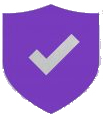
Protect Yourself Rules |
Complete each of the following:
- Watch the "Protect Yourself" video lessons for this adventure.
- Explain the difference between a safe touch and an unsafe
touch.
- Identify five trusted adults and share this list with your
parent or legal guardian.
- Describe "personal space." and complete the Personal Space
Bubble.
- Come up with three different ways to say no to someone who
touches you on a private body part.
|

Yo-Yo |
Complete each of the following:
- Learn the safety rules of using a yo-yo and follow them
at all times.
- Using a real yo-yo string, a regular string, or a piece
of yarn, show how to find the proper yo-yo string length for
you.
- Explain why it is important to have the correct string length
and to be in the right location before throwing a yo-yo.
- Demonstrate how to properly string a yo-yo and how to create
a slip knot.
- In an area where there are no hazards or other people, conduct
the pendulum experiment with a yo-yo. Explain what happens to
the yo-yo when the string is short compared to when the string
is longer.
- Show that you can properly wind a yo-yo.
- Demonstrate the gravity pull trick with a yo-yo.
|

Modular Design |
Complete the following requirements:
- Learn what modular design is and identify three things that
use modular design in their construction.
- Identify three benefits of using modular design.
- Using modular-based building pieces, build a model from
a set of instructions.
- Using modular-based building pieces, build a model without
using a set of instructions. The model may represent something
real or imagined.
- Using the model you made in requirement 4, create a set
of step-by-step instructions on how to make your model. Have
someone make your model using your instructions.
- Share your model with your den and/or family. Explain what
your model is designed to do.
|
Page updated on:
January 19, 2023
|




















